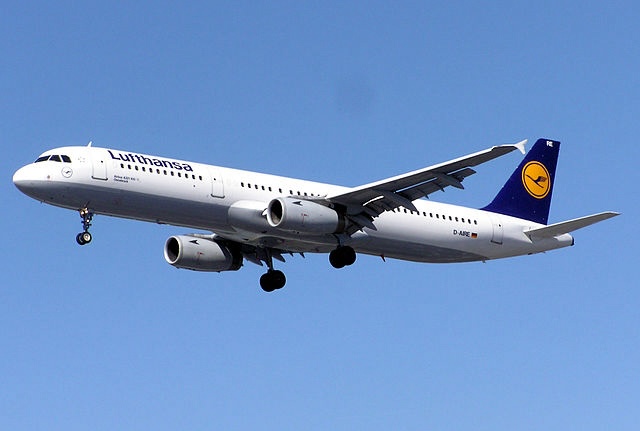A321
Summary
| Category | Military Transport Aircraft |
| Origin country | 🇪🇺 Europe |
| Manufacturer | Airbus |
| First flight | 27 February 1987 |
| Year introduced | 1994 |
| Number produced | 2917 units |
| Average unit price | $120 million |
Description
The Airbus A321, initially known as the Stretched A320, A320-500, and A325, was launched on November 24, 1988, coinciding with the A320's entry into service, after securing commitments for 183 aircraft from 10 customers. Development saw the maiden flight on March 11, 1993, featuring the prototype, registration F-WWIA, equipped with IAE V2500 engines, followed by a second prototype with CFM56-5B turbofans in May 1993. Lufthansa and Alitalia were the launch customers. Assembly of the A321 was carried out in Germany. The A321 design is the largest variant of the A320 family. Over three decades, the A321's maximum takeoff weight (MTOW) increased by 20% from 83 to 101 tons, seating became 10% more dense with 244 seats and range doubled from 2,300 to 4,700 nmi. By 2019, 4,200 had been ordered—one-quarter of all Airbus single-aisles—including 2,400 neos, one-third of all A320neo orders.
The Airbus A321 is a commercial passenger airliner and is not designed for military applications, and therefore lacks specific armament systems. It is a narrow-body, twin-engine jet used for short to medium-range flights, with its primary function being the transportation of passengers. There are no internal or external configurations for carrying munitions, nor does it have a payload capacity defined in terms of weapons.
The Airbus A321 distinguishes itself through several key design features. As a low-wing cantilever monoplane, it incorporates a conventional tail unit with a single vertical stabilizer and rudder. A notable adaptation from the A320 is the fuselage stretch, achieved by inserting a 4.27 m (14 ft 0 in) plug ahead of the wing and a 2.67 m (8 ft 9 in) plug behind it, extending the A321's length by 6.94 m (22 ft 9 in). This modification necessitated converting the overwing window exits into door exits, repositioned to the front and rear of the wings. To sustain aerodynamic performance, the A321 incorporates double-slotted flaps and refined trailing edge designs, increasing the wing area from 124 m2 (1,330 sq ft) to 128 m2 (1,380 sq ft). To manage the increase in maximum takeoff weight, the center fuselage and undercarriage were reinforced.
The A321 has seen extensive use with various airlines globally, serving diverse routes from short-haul domestic flights to transcontinental services. Its operational strengths include its passenger capacity and fuel efficiency, particularly with the A321neo variants. The aircraft has been widely adopted by airlines in Europe, North America, Asia, and the Middle East. American Airlines is the largest operator, utilizing the A321 for its network. Early operational weaknesses of the A321-100 included its shorter range compared to the A320, which was addressed in subsequent A321-200 and A321neo models with increased fuel capacity and improved engine technology.
Main Variants:
-
A321-100: The initial variant of the A321, it had a shorter range than the A320 due to the increased weight without a compensating increase in fuel capacity, with only about 90 aircraft produced.
-
A321-200: This heavier, longer-range variant of the A321 featured higher thrust engines, structural strengthening, and optional additional fuel tanks to achieve transcontinental US range.
-
A321neo: Part of the A320neo family, this variant incorporates new engine options and sharklets, offering improved fuel efficiency and extended range.
-
A321LR: A longer-range version of the A321neo, the A321LR features an increased MTOW and additional fuel tanks, allowing it to fly extended routes with a reduced passenger capacity.
-
A321XLR: An enhanced version of the A321LR, the A321XLR includes a permanent Rear Centre Tank, strengthened landing gear, and optimized wing flaps, further extending its range.
Technical specifications
| Version: A320-200 | |
|---|---|
| Maximum speed | 871 km/h (541 mph) |
| Wing area | 122.6 m² (1319.7 sqft) |
| Wingspan | 34.1 m (111.9 ft) |
| Height | 11.8 m (38.6 ft) |
| Length | 37.6 m (123.3 ft) |
| Service ceiling | 12,000 m (39,370 ft) |
| Empty weight | 42,600 kg (93,917 lbs) |
| Max. takeoff weight | 78,000 kg (171,960 lbs) |
| Takeoff distance | 2,090 m (6,857 ft) |
| Powerplant | 2 × turbojets CFM International CFM56-5A1 delivering 11340 kgp |


